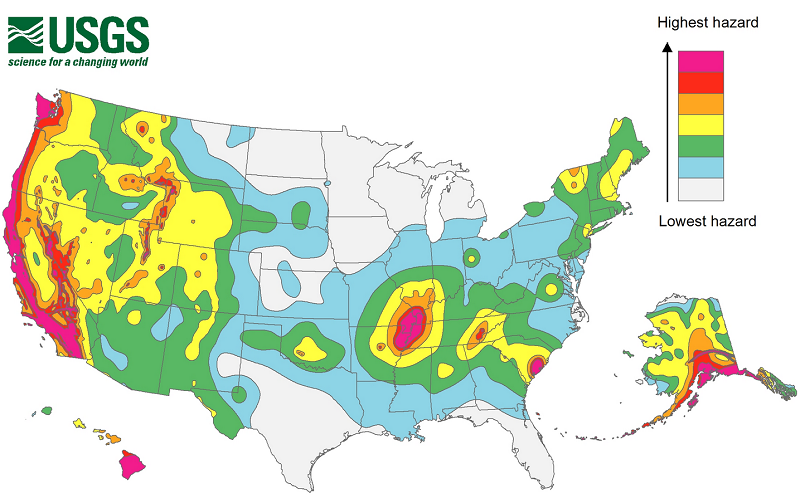What are the odds of a major earthquake along the US West Coast within 30 years from now?
Pretty good. The next “Big One” won’t be fun, people will die, but it’s not going to be the end of California.
The last Cascadia Megathrust earthquake occurred in 1700 (inferred from Japanese tsunami records). Over the past 2617 years, there have been similar quakes (M8+) every (on average) 500 years, with the shortest interval (so far) at 390 years.
It has been 317 years since the quake in 1700, and if the periodicity holds, then the next quake will occur around 75 years from now. Or later. Or earlier.

The quake in 1700 was estimated to be between 8.7 and 9.2 in magnitude. The current odds of a M8+ quake caused by the subduction of the Juan de Fuca plate is 37% chance in 50 years; odds that it is a M9+ rests at 10–15% within the same time frame. This means that within the next 50 years, there will most likely be a quake and a 63% chance it will be less than M8+, and a 85% chance it will be less than M9+.
Are we ready?
Please note that entire region is not ready for either a M8+ or M9+ seismic event. It will cause massive destruction, and most likely an economic collapse of the region. It will most likely cause the reinvigoration of the volcanos, which if they also erupt (primarily Mt Rainier) most of the Kent Valley and parts of Pierce and King Counties will be covered in lahars. If there’s not much warning before an eruption of Rainier, a lot of people in Tacoma are going to die. You won’t be able to evacuate fast enough.

Also, whereas in some areas, quakes mean uplift, scarp movements, and such, when it comes to Cascadia Megathrust quakes, there is a dragging down of the edge of the North American plate that is overriding the Juan de Fuca plate. The amount of expected subsidence from the quake is 1–2 meters (meaning that sea level incursion will rise by that amount).
Other apocalytical scenarios for the US: The New Madrid Megaquake
An even scarier scenario faces the Midwest. There hasn’t been a major earthquake in the Midwest in 200 years, but the New Madrid fault zone in Missouri produced the granddaddy of all American earthquakes in 1811–12. It lasted all winter. Not many people died, however, because the only people living in the Midwest in 1812 were Indians in huts and tepees and pioneers in tiny log cabins. Earthquakes don’t kill people. Architecture does. (And fires… and tidal waves.)

Because it’s been 200 years, people have forgotten that St. Louis and Memphis and even Indianapolis and Louisville are in an active seismic zone. Consequently, few buildings and bridges and gas pipelines and sewage systems will withstand a tremor the size of the 1812 New Madrid quake — which is going to happen at some point. In fact, delivery is already overdue: sedimentary evidence shows that a big quake on that fault happens about every 200 years. We’re at 205. I hope it happens on a sunny day when as many people as possible are outside.

Coming back to the topic
So what is the likelihood of a mega thrust earthquake in 30 years? In the last 2617 years, the shortest interval between quakes was 390 years. It has been 317 years since the last super quake, and that’s still 73 years from equaling the shortest inter-quake interval.











